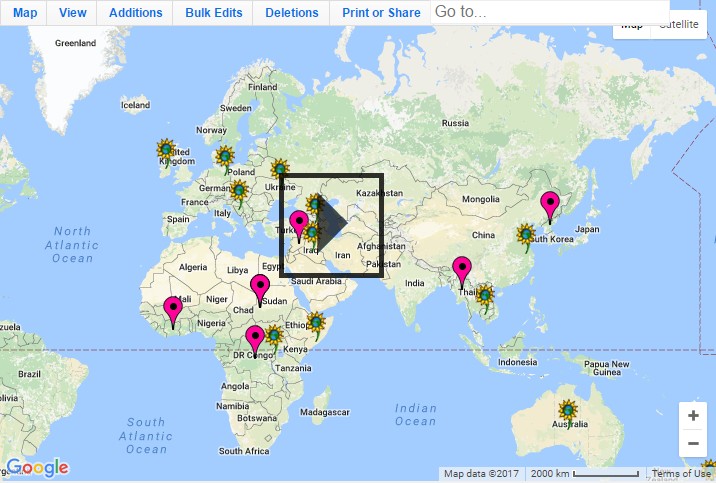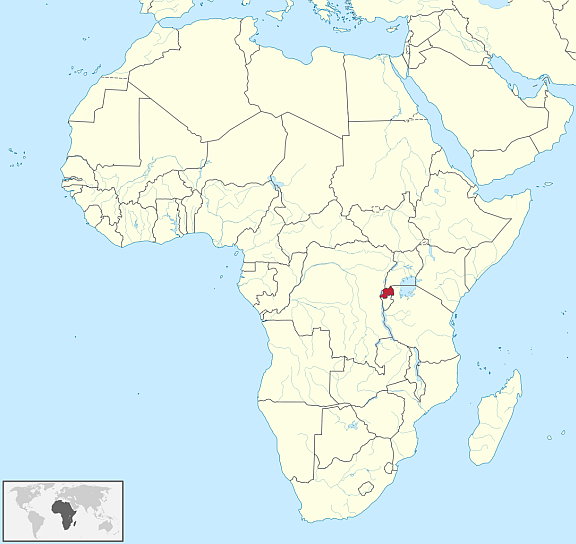CGW4U
World Issues: A Geographic Analysis
Unit 3: Africa
Activity 2: How do we know if a country is on the verge of genocide?
Attention: This material includes sensitive content and may be upsetting for some students.
Definition of Genocide
In this activity, we will look at a particular type of world issue: Genocide. Take a moment and write your own definition of genocide. Are you confident that your definition is thorough? Can you test your definition by providing a few examples?
Start by attempting to identify which of the following have been used "as tools” of genocide:
How many of the 6 “tools” did you know had been used to exterminate millions of people?
While some of these events predate the creation of the United Nations definition of genocide, as we will see, they all meet the criteria. In each case the government failed or refused to protect the security of all of the people there.
Past and Possible Genocides
If we think of the role of government, we would include their role in creating “safe” environments for their people. That safety exists in many different ways - speed limits, food inspection, healthcare, education, and anything that creates justice and wellbeing of the population in that country. In every case of genocide these goals have been pushed aside for the benefit of one section of the broader society.
When a society engages in a war, the goal is to protect their people (and allies) and their way of life. In the case of genocide, governments go to extraordinary lengths to rid the world of part of their own population.
Genocidaires, the people who commit genocide, have a goal and they have plans to achieve that goal. In their minds they believe that these plans will make their country “better.”
In any society, there will always be those who oppose the actions of others and blame them for real or perceived wrongs. But the existence of these people does not lead inevitably to genocide. The question is, how do we know we are on the verge of a genocide?
Tragically we have many examples of genocide to consider.
The following map, Past and Possible Genocides, shows two categories of genocides, those that have happened, and those that MAY happen. Click on the image to interact with the map. Click on each of the six identified earlier in this activity (USA, Turkey, Ukraine, Germany, Cambodia, Rwanda). Can you discern from the videos, images and text on the map, if there are indicators or a point at which it was clear that a genocide was about to happen? Or, is genocide evident only once it has begun?

Issues Café: Stages of Genocide
Do you think this system (The 8 Stages of Genocide) would help predict events that are on the verge of becoming a genocide?
Case Study: Rwanda (1994)
Origins of the events of 1994 Rwanda can be easily tracked back to the actions of colonizers. Once an integrated society where Hutu and Tutsi people intermarried, colonial powers elevated Tutsi above Hutu creating tension between these groups.

Rwanda is one of Africa’s smallest nations.
Wikimedia
In 1994 tensions grew with the murder of President Habyarimana and the formation of the Interahamwe under the leadership of Theoneste Bagosora, and later would erupt into full blown genocide.
From colonization, to independence Rwanda
As you read the article, The Rwandan Genocide and watch the three videos within the article from History.com about the events in Rwanda in 1994, think about the relationship between the Hutu and the Tutsi. How could these groups go from living peacefully to outright genocide?
 Genocide
Genocide
At which point do you think a genocide was about to happen or was underway in Rwanda? Use the content from this activity to support your thinking. Identify and fully explain two or three criteria for the point at which a genocide begins. Again check each of the six genocides from the beginning of this activity. Can you discern from the videos, images and text if there was a point at which it was clear that a genocide was about to happen or was underway? Can you identify clear examples of the stages of genocide?
After the genocide, the rebuilding process began. Criminals like Bagosora were tried and convicted in the United Nations International Criminal Tribunal for crimes against humanity. The national courts were overwhelmed with the sheer number of cases to be tried (over 130,000) so traditional gacaca were used to try and quickly process the accused and also provide some reconciliation for survivors of the genocide.